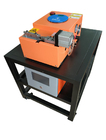
loading
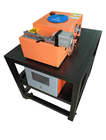

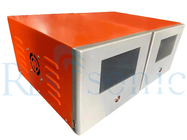

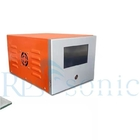

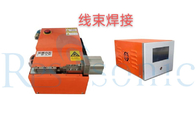

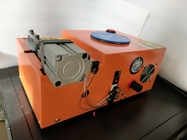

| Place of Origin | China |
|---|---|
| Brand Name | Rps-sonic |
| Certification | CE |
| Model Number | RPS-HW20 |
| Minimum Order Quantity | 1pcs |
| Price | negotiable |
| Packaging Details | CARTON |
| Delivery Time | 1DAYS |
| Payment Terms | T/T |
| Supply Ability | 200PCS/MONTH |
| Frequency | 20Khz | Power | 2000~6000w |
|---|---|---|---|
| Horn Material | Titanium | Horn Size | Customized |
| Generator | Digital | Weight | 52kg |
| Warranty | One Year | Package | Wooden |
| High Light | Ultrasonic Metal Welding Machine 2000w,Titanium Ultrasonic Metal Welder | ||
20Khz 2000w High Power Ultrasonic Welding Machine For Metal Welding
20Khz 2000w High Power Ultrasonic Harness Welding Machine
Parameter
| Power | 2000W | Frequency | 20KHZ |
| Power supply | 220V | Gas source | 0.5kg |
| Way to control | Single chip microcomputer | Maximum working stroke | 30mm |
| Welding area range | 0.3M2-10M2 | Welding time range | 0.2s---5s |
| Welding mode | Automic | Quality control | 1year |
| Dimensions | 500LX400WX230H MM | Total Weight | 52kg |
| Generator size | 400LX290WX130H MM | ||
| Features:Automatic tracking of energy, time, welding time, energy, air pressure, width, amplitude adjustable | |||
Description
Ultrasonic metal welding uses high-frequency vibration waves to be transmitted to two metal surfaces to be welded. Under pressure, the two metal surfaces are rubbed against each other to form a fusion between molecular layers. Its advantages are rapid, energy-saving, and fusion. High strength, good electrical conductivity, no sparks, close to cold processing; the disadvantage is that the welded metal parts should not be too thick (generally less than or equal to 5mm), the solder joints should not be too large, and they need to be pressurized. Ultrasonic metal welding was discovered by accident in the 1830s. At that time, during the current spot welding electrode plus ultrasonic vibration test, it was found that it could be welded without current, so the ultrasonic metal cold welding technology was developed. Although ultrasonic welding was discovered earlier, its mechanism of action is still not very clear so far. It is similar to friction welding, but there are differences. Ultrasonic welding has a short time and the temperature is lower than recrystallization; it is also different from pressure welding because the static pressure applied is much smaller than that of pressure welding. It is generally believed that in the initial stage of the ultrasonic welding process, the tangential vibration removes the oxides on the metal surface, and the protruding part of the rough surface produces repeated micro-welding and destruction, which increases the contact area and increases the temperature of the welding zone. High, plastic deformation occurs at the interface of the weldment. In this way, under the action of contact pressure, when they approach each other to the distance at which atomic gravity can act, a solder joint is formed. The welding time is too long, or the ultrasonic amplitude is too large, which will reduce the welding strength or even destroy it.
Features
There is no need for flux and external heating, no deformation due to heating, no residual stress, and low requirements for pre-welding treatment on the surface of the weldment. Not only the same kind of metal, but also dissimilar metals can also be welded. It is possible to weld thin sheets or filaments to thick plates. Ultrasonic welding of electrical conductors has much less energy than current welding, and is often used for welding the leads of transistors or integrated circuits. When used for sealing welding of medicines and explosive materials, it can prevent general welding from contaminating medicines due to dissolved objects, and will not explode due to heat. It uses ultrasonic waves to weld metal wires. It consists of a power box, a transducer, a pneumatic host and a tool head. In addition, it also includes control components such as hubs, wire measuring devices, and microprocessors. The power box can convert the usual external voltage (220V, 1Φ, 50 or 60Hz) into 20000Hz (20KHz), 1000V voltage, and then output after being adjusted and controlled by the power box to act on the transducer. The transducer is an efficient electrical component that can convert electrical energy into mechanical energy. Compared with ordinary motors, the transducer has two main differences: first, the transducer converts electrical energy into linear vibration instead of rotation; second, it has a very high working efficiency and can convert 95% of the electrical energy. After being converted by the transducer, the mechanical energy is applied to the welding head. The ultrasonic welding head is made of titanium alloy and processed into a specific shape according to the principle of acoustics, thus ensuring the maximum transmission of energy.
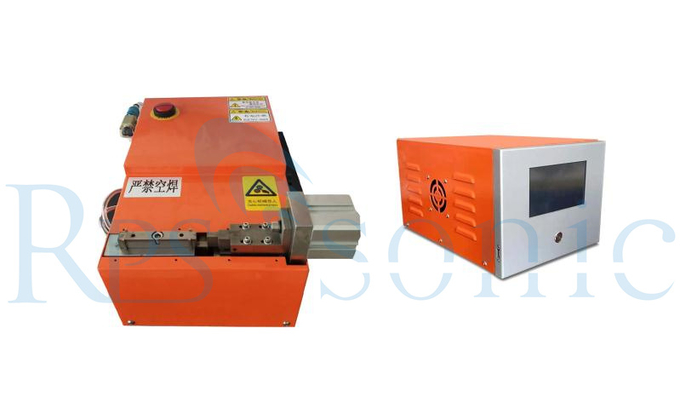
| Frequency | 20Khz | Power | 2000~6000w |
|---|---|---|---|
| Horn Material | Titanium | Horn Size | Customized |
| Generator | Digital | Weight | 52kg |
| Warranty | One Year | Package | Wooden |
| High Light | Ultrasonic Metal Welding Machine 2000w,Titanium Ultrasonic Metal Welder | ||
20Khz 2000w High Power Ultrasonic Welding Machine For Metal Welding
20Khz 2000w High Power Ultrasonic Harness Welding Machine
Parameter
| Power | 2000W | Frequency | 20KHZ |
| Power supply | 220V | Gas source | 0.5kg |
| Way to control | Single chip microcomputer | Maximum working stroke | 30mm |
| Welding area range | 0.3M2-10M2 | Welding time range | 0.2s---5s |
| Welding mode | Automic | Quality control | 1year |
| Dimensions | 500LX400WX230H MM | Total Weight | 52kg |
| Generator size | 400LX290WX130H MM | ||
| Features:Automatic tracking of energy, time, welding time, energy, air pressure, width, amplitude adjustable | |||
Description
Ultrasonic metal welding uses high-frequency vibration waves to be transmitted to two metal surfaces to be welded. Under pressure, the two metal surfaces are rubbed against each other to form a fusion between molecular layers. Its advantages are rapid, energy-saving, and fusion. High strength, good electrical conductivity, no sparks, close to cold processing; the disadvantage is that the welded metal parts should not be too thick (generally less than or equal to 5mm), the solder joints should not be too large, and they need to be pressurized. Ultrasonic metal welding was discovered by accident in the 1830s. At that time, during the current spot welding electrode plus ultrasonic vibration test, it was found that it could be welded without current, so the ultrasonic metal cold welding technology was developed. Although ultrasonic welding was discovered earlier, its mechanism of action is still not very clear so far. It is similar to friction welding, but there are differences. Ultrasonic welding has a short time and the temperature is lower than recrystallization; it is also different from pressure welding because the static pressure applied is much smaller than that of pressure welding. It is generally believed that in the initial stage of the ultrasonic welding process, the tangential vibration removes the oxides on the metal surface, and the protruding part of the rough surface produces repeated micro-welding and destruction, which increases the contact area and increases the temperature of the welding zone. High, plastic deformation occurs at the interface of the weldment. In this way, under the action of contact pressure, when they approach each other to the distance at which atomic gravity can act, a solder joint is formed. The welding time is too long, or the ultrasonic amplitude is too large, which will reduce the welding strength or even destroy it.
Features
There is no need for flux and external heating, no deformation due to heating, no residual stress, and low requirements for pre-welding treatment on the surface of the weldment. Not only the same kind of metal, but also dissimilar metals can also be welded. It is possible to weld thin sheets or filaments to thick plates. Ultrasonic welding of electrical conductors has much less energy than current welding, and is often used for welding the leads of transistors or integrated circuits. When used for sealing welding of medicines and explosive materials, it can prevent general welding from contaminating medicines due to dissolved objects, and will not explode due to heat. It uses ultrasonic waves to weld metal wires. It consists of a power box, a transducer, a pneumatic host and a tool head. In addition, it also includes control components such as hubs, wire measuring devices, and microprocessors. The power box can convert the usual external voltage (220V, 1Φ, 50 or 60Hz) into 20000Hz (20KHz), 1000V voltage, and then output after being adjusted and controlled by the power box to act on the transducer. The transducer is an efficient electrical component that can convert electrical energy into mechanical energy. Compared with ordinary motors, the transducer has two main differences: first, the transducer converts electrical energy into linear vibration instead of rotation; second, it has a very high working efficiency and can convert 95% of the electrical energy. After being converted by the transducer, the mechanical energy is applied to the welding head. The ultrasonic welding head is made of titanium alloy and processed into a specific shape according to the principle of acoustics, thus ensuring the maximum transmission of energy.









Ultrasonic Welding Equipment Ultrasonic Welding Transducer Ultrasonic Welding Converter Ultrasonic Liquid Processor Ultrasonic Cutting Equipment Ultrasonic Spray Nozzles Ultrasonic Power Supply Ultrasonic Soldering Equipment Ultrasonic Welding Horn Ultrasonic Assisted Machining Ultrasonic Testing Equipment
content is empty!